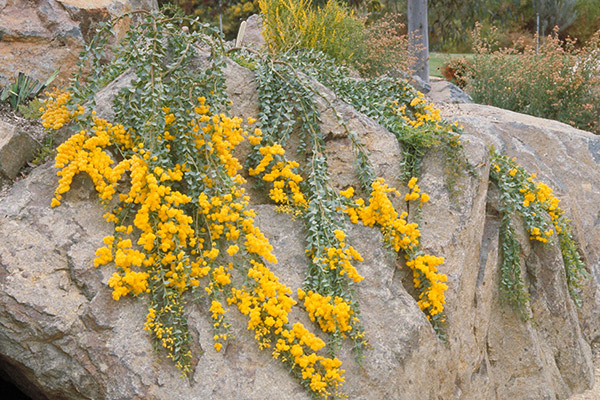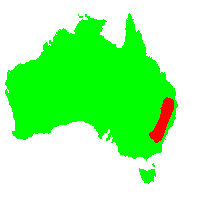General Description:
Acacia cultriformis is a medium shrub up to 2-3 metres tall although a cascading or prostrate form of unknown origin is in cultivation. Like most members of the genus, the mature plant does not have true leaves but has leaf-like flattened stems called phyllodes. In A.cultriformis the phyllodes are greyish, triangular in shape and about 25 mm long by 12 mm wide with a small point (mucro) at the tip. The bright yellow flowers occur in globular-shaped clusters in groups from the axils of the phyllodes. Flowering is mainly in spring.
A.cultriformis is one of the most widely cultivated wattles because of its attractive foliage and colourful flowers. The prostrate form is particularly attractive as a landscaping plant on sloping rock walls. The plant is suited to a wide range of soil types provided they are reasonably well drained. A position in full sun or light shade is suitable and the species is tolerant of at least moderate frosts.
Propagation is relatively easy by normal seed raising methods following pretreatment by soaking in boiling water or by scarification. Cuttings may be successful but this method is not often used. Propagation of the prostrate form would need to be carried out from cuttings in order to retain the prostrate habit.

Acacia cultriformis; Prostrate form
Photo: Brian Walters
 Australian Native Plants Society (Australia)
Australian Native Plants Society (Australia)